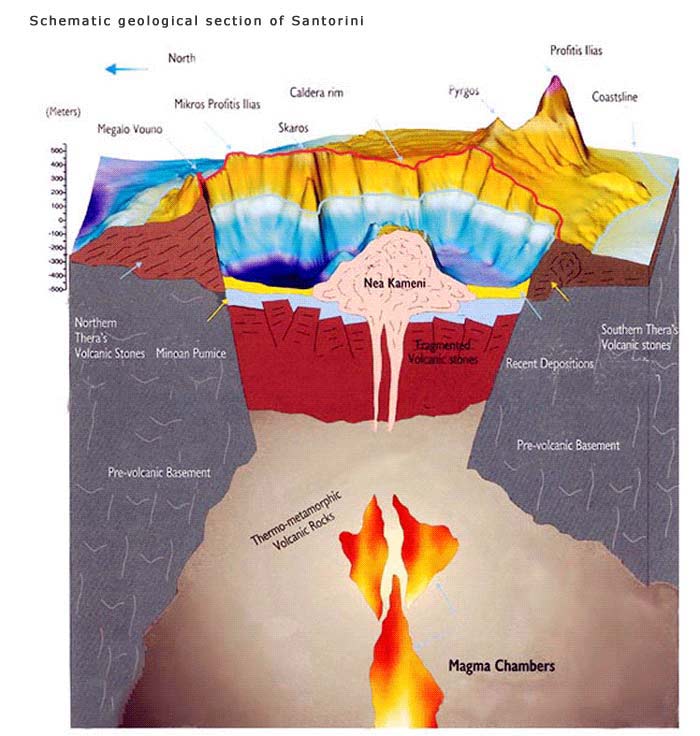
Do a Google image search for "Greece." Before you find pictures of the Parthenon or Acropolis, you'll see several beautiful photos of Santorini, the picturesque island in the Aegean Sea. The British Broadcasting Company named it the world's best island in 2011. Santorini is a tourist magnet, famous for its breathtaking, cliff side views and sunsets. It's also a volcanic island that has been relatively calm since its last eruption in 1950. Until now. The Santorini caldera is awake again and rapidly deforming at levels never seen before. Georgia Tech Associate Professor Andrew Newman has studied Santorini since setting up more than 20 GPS stations on the island in 2006.

"After decades of little activity, a series of earthquakes and deformation began within the Santorini caldera in January of 2011," said Newman, whose research is published byGeophysical Research Letters. "Since then, our instruments on the northern part of the island have moved laterally between five and nine centimeters. The volcano's magma chamber is filling, and we are keeping a close eye on its activity."
Newman, a geophysicist in the School of Earth and Atmospheric Sciences, cannot be certain whether an eruption is imminent since observations of such activity on these types of volcanoes are limited. In fact, similar calderas around the globe have shown comparable activity without erupting. However, Newman says the chamber has expanded by 14 million cubic meters since last January. That means enough magma has been pumped into the chamber to fill a sphere three football fields across.

"That could be dangerous," notes Newman. "If the caldera erupts underwater, it could cause local tsunamis and affect boat traffic, including cruise ships, in the caldera. Earthquakes could damage homes and produce landslides along the cliffs."
More than 50,000 tourists a day flock to Santorini in the summer months (from May to October). It's common to see as many as five cruise ships floating above the volcano.
Santorini is the site of one of the largest volcanic events in human history. The Minoan eruption, which occurred around 1650 B.C., buried the major port city of Akrotiri with more than 20 meters of ash and created Santorini's famous, present-day cliffs. Newman says such history will likely not repeat itself any time soon. Such an eruption comes along once every 100,000 years, and the current inflation in the magma chamber is less than 1 percent of the Minoan blast.
Clip from the IMAX film "Greece, Secrets of the past".
The eruption at Santorini (Greece) is considered to be one of the largest in history, and certainly the most massive volcanic explosion in the last 10,000 years
The eruption at Santorini (Greece) is considered to be one of the largest in history, and certainly the most massive volcanic explosion in the last 10,000 years
No comments:
Post a Comment